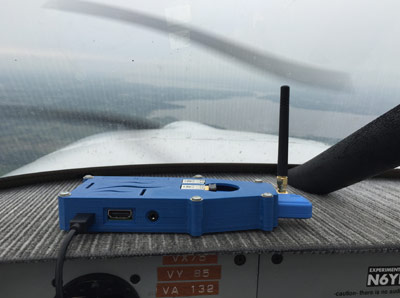To setup a Raspberry PI security camera.
I flash the SD with the latest [NOOBS] after formatting the SD card with the [SDCard Formatter].
Boot into the desktop and put the Raspberry PI on the wifi network.
Enable the [camera interface] and reboot.
Sudo edit the /boot/config.txt file. Disable the camera LED by adding the entry:
disable_camera_led=1
Install the [poster] module by running the command-line:
sudo pip install poster
Create the file: ~/superscript
cd ~/Documents/PythonScripts/Camera/
python capture_image.py
Add execute permissions to superscript.
chmod +x ~/superscript
Create a folder for the Camera Python scripts.
mkdir ~/Documents/PythonScripts
mkdir ~/Documents/PythonScripts/Camera/
Create the ~/Documents/PythonScripts/Camera/capture_image.py script. Rotate the camera as necessary.
#get access to the camera
from picamera import PiCamera
#import so we can invoke another script
import subprocess
#get access to the clock
import datetime
# get access to sunrise and sunset
from astral import Location
#sleep so we can wait on the camera
from time import sleep
from fractions import Fraction
# create a camera object
camera = PiCamera()
#set the image resolution
camera.resolution = (640, 480)
#rotate the camera if upside-down
camera.rotation = 180
#flip the camera on the horizontal
camera.hflip = True
i = 0;
#record defaults
framerate = camera.framerate
shutter_speed = camera.shutter_speed
exposure_mode = camera.exposure_mode
iso = camera.iso
while True:
# Get sunrise and sunset for Monroe, WA
l = Location()
l.latitude = 47.887059
l.longitude = -121.8792998
l.timezone = 'US/Pacific'
sunrise = l.sun()['dawn']
sunriseHour = int(sunrise.strftime('%H'))
sunriseMinute = int(sunrise.strftime('%M'))
sunset = l.sun()['sunset']
sunsetHour = int(sunset.strftime('%H'))
sunsetMinute = int(sunset.strftime('%M'))
hours = int(datetime.datetime.now().strftime('%H'))
minutes = int(datetime.datetime.now().strftime('%M'))
seconds = int(datetime.datetime.now().strftime('%S'))
if (hours >= sunriseHour and hours <= sunsetHour):
#print 'work in the light'
camera.framerate = framerate
camera.shutter_speed = shutter_speed
camera.exposure_mode = exposure_mode
camera.iso = iso
else:
#print 'work in the dark'
camera.framerate = Fraction(1,6)
camera.shutter_speed = 6000000
camera.exposure_mode = 'off'
camera.iso = 800
#show preview with some transparency
#camera.start_preview(alpha=200)
#wait two seconds for camera lighting
#sleep(2)
filename = 'image'+str(i)+'.jpg'
#save image locally
camera.capture(filename)
#invoke the script to upload the image
subprocess.call('python save_image.py '+filename, shell=True)
#stop the preview
#camera.stop_preview()
sleep(3)
i = (i + 1) % 12
Create the save_image.py script. Alter the domain and path to ~/Documents/PythonScripts/Camera/save_image.py.
#!/usr/bin/env python
import urllib, urllib2, os, os.path, sys
from poster.encode import multipart_encode
from poster.streaminghttp import register_openers
command = os.popen('ifconfig | grep -A1 wlan0')
client_ip = command.read()
#print client_ip
register_openers()
if (len(sys.argv) > 1):
filename = sys.argv[1];
else:
filename = 'image.jpg';
query = { 'filename' : filename, 'client_ip' : client_ip }
url = "http://domain/path/save_image.php?"+urllib.urlencode(query)
print 'Saved: '+filename;
if (os.path.isfile(filename)) :
values = {'image':open(filename)}
data, headers = multipart_encode(values)
headers['User-Agent'] = 'Mozilla/4.0 (compatible; MSIE 5.5; Windows NT)'
headers['filename'] = filename
req = urllib2.Request(url, data, headers)
req.unverifiable = True
content = urllib2.urlopen(req).read()
#print (content)
else:
print 'No image file found to upload\r\n';
On your PHP server somewhere, make a new folder and create the page save_image.php.
<?php
$filename = "image.jpg";
if ($_GET['filename'] != null) {
$filename = $_GET['filename'];
}
if ($_GET['client_ip'] != null) {
$clientip = $_GET['client_ip'];
file_put_contents('client_ip.txt', $clientip);
}
$image = $_FILES["image"];
if ($image == null) {
echo "Missing image to save as: ";
echo $filename;
} else {
echo "Saved image!";
$tmp_name = $_FILES["image"]["tmp_name"];
move_uploaded_file($tmp_name, $filename);
}
?>
On your PHP server somewhere, save the page images.php near your server image paths.
<html>
<?php
function displayFirstImage($path) {
$files = glob($path);
usort($files, function($a, $b) {
return filemtime($a) < filemtime($b);
});
foreach($files as $file){
printf('<img src="%1$s"/>', $file);
break;
}
}
displayFirstImage('path/to/camera1/*.jpg');
displayFirstImage('path/to/camera2/*.jpg');
displayFirstImage('path/to/camera3/*.jpg');
displayFirstImage('path/to/camera4/*.jpg');
?>
<script>
setTimeout("window.location.reload()", 30000);
</script>
</html>
Edit ~/.bashrc and add the following to the end of the file.
~/superscript &
Reboot the Raspberry PI and the security camera is ready to go!
